TechRadar Verdict
The IMO Q is eye-catchingly affordable, but that comes at a cost, as headache-inducing performance, a rubbish screen and poor battery life turns this cheap phone from a bargain to a bad investment.
Pros
- +
Very cheap
- +
Has some spare storage
- +
Smarter than a feature phone
Cons
- -
Awful performance
- -
Poor battery life
- -
Low-quality, dated screen
Why you can trust TechRadar
The IMO Q is the sort of phone you might buy for your kids, for a festival or a mad holiday you think your iPhone might not survive, as it's cheap enough to be almost disposable for many buyers.
Given its tiny price, undercutting even the likes of the Moto E3, the IMO Q is predictably basic. It’s slow, the screen is ugly and it’s one of the few handsets this year to use a microSIM rather than a nanoSIM.
Phones a little more expensive than this have improved massively in the last few years, while the IMO Q is a trial to use, just like the ultra-cheap phones of old.
But, y’know, that’s just IMO. And at this end of the market even a small difference in price can be significant, so despite its failings is the IMO Q still worth considering?
IMO Q price and release date
- Out now in the UK
- RRP of £49.99 but often available for less
The IMO Q is available now in the UK and its RRP is just £49.99. But as cheap as that is you can already find it for less online.
And you will have to venture online, as this isn't a phone you'll find in high street stores or on the shelves at the big networks.
Shop around and it can be yours for free on tariffs from £10 which include 1GB of data - ensuring the IMO Q is affordable however you decide to purchase it.
Key features and design
- Very low price
- Bland design
- No 4G
From one angle, the IMO Q is a phone for the common person, for those who can’t afford or can't justify mobiles encased in glass and the type of aluminium we always hear called “aircraft grade”.
You could daydream a meeting where the people behind IMO got together, incensed by the amount of cash Samsung and Apple expect people to pay for a phone. And so, the IMO Q was born.
This never happened, as far as we know. But if we started by describing the IMO Q in plain terms, you might have stopped reading already. It’s plastic, grey and dull-looking, a classic low-cost, low-effort design that could have been picked at random out of the great big catalogue of Chinese handsets.
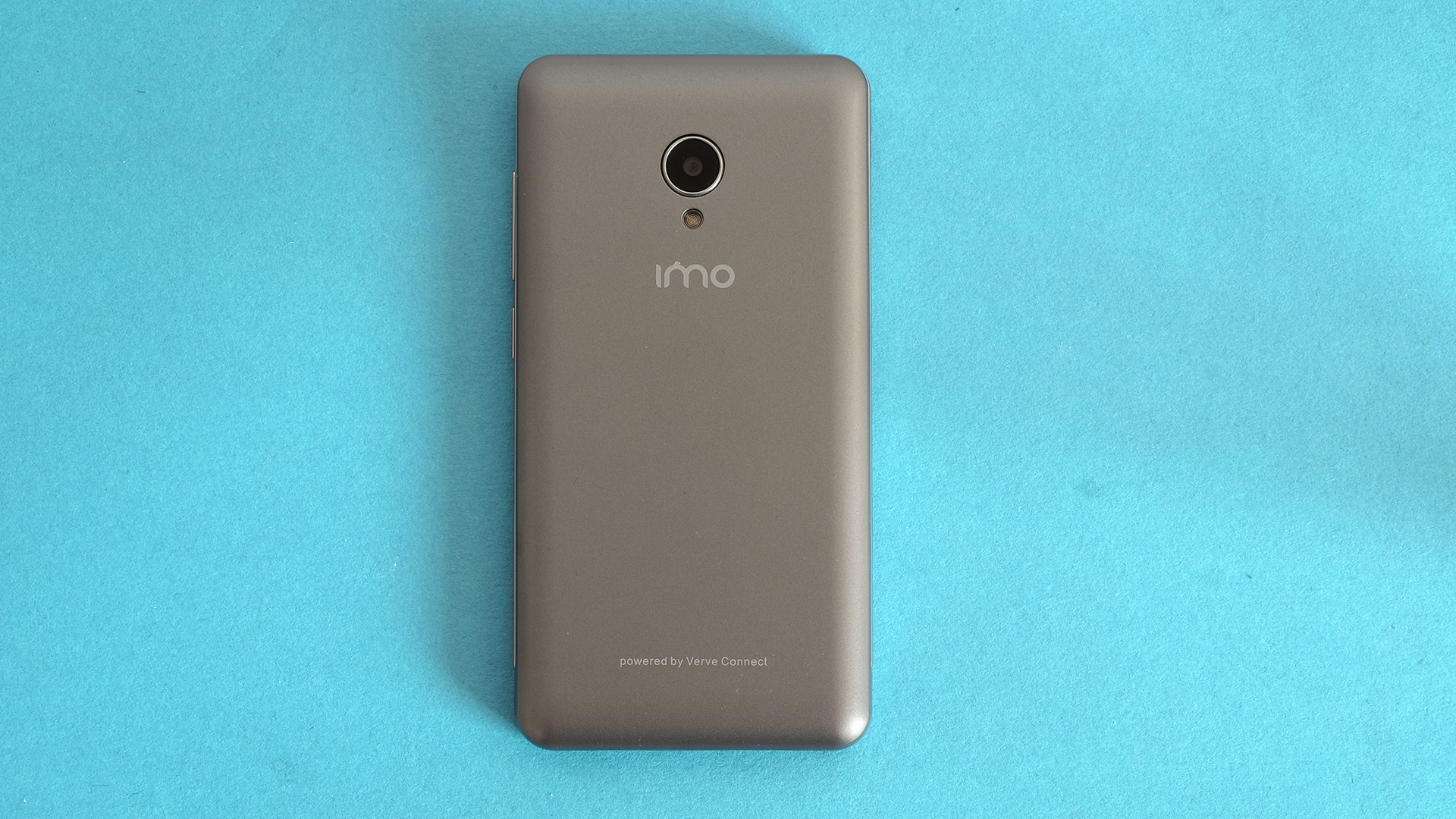
The IMO Q is the sort of phone that could have been released any time in the past 5 years. We’d have perhaps been impressed in 2010. Now? Not so much.
However, it’s small, it’s comfy to hold and unlike some dire old budget phones the top layer of the screen is glass rather than plastic. It doesn’t have a fingerprint-resisting oleophobic coating and doesn’t use brand-name toughened glass, but we’ve not managed to scratch it yet.
This is a style of phone we don’t see too often anymore, one whose back is a single piece of plastic you can pull off to get access to the battery, the SIM slot and so on. It takes us back to 2012, and there’s really nothing wrong with this build other than that it’s not ‘fancy’. At this price we don’t expect fancy.
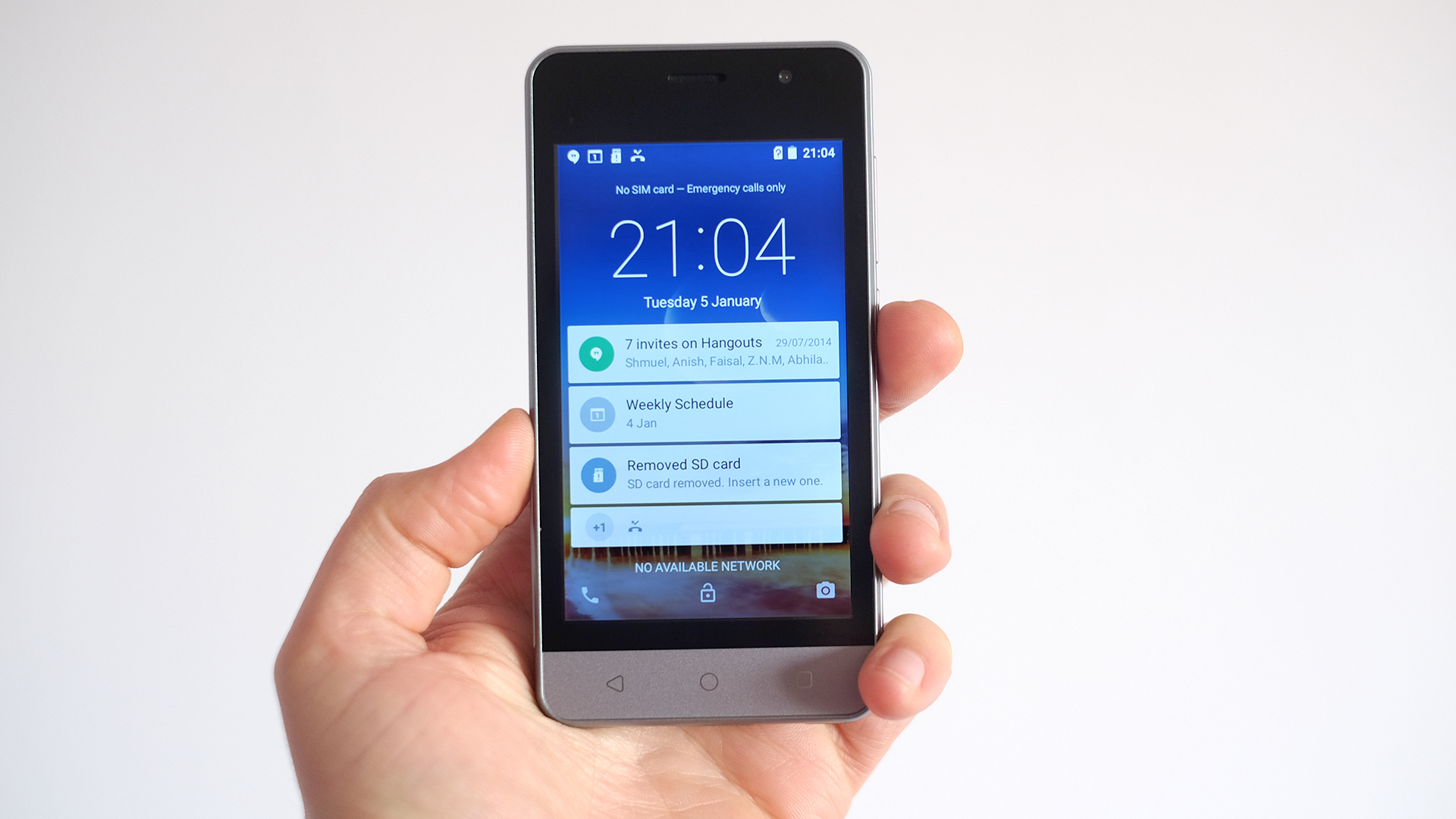
It almost goes without saying that you don’t get water resistance, a fingerprint scanner or other such flashy bits. The most serious omission is 4G, as this is one of the few new non-4G phones. Whether this is a problem or not really depends on the quality of your network’s 3G.
Contrary to 4G’s messaging, 3G internet can be decently fast, but it certainly isn’t a lot of the time. If you have a 4G phone at the moment, you can give 3G a test drive by switching off 4G in the settings menu. Our Three UK test connection was passable, but a clear step down from 4G.
The IMO Q has a few big holes, but there are some notable elements. It has 8GB of storage, which doesn’t sound like a lot but gives you a few spare gigabytes to play with, thanks to the relatively slimline Android install used here.
It’ll fit a few storage-chomping games or a reasonable on-the-go music library. Older phones at this price used to have just 4GB: truly piddly.
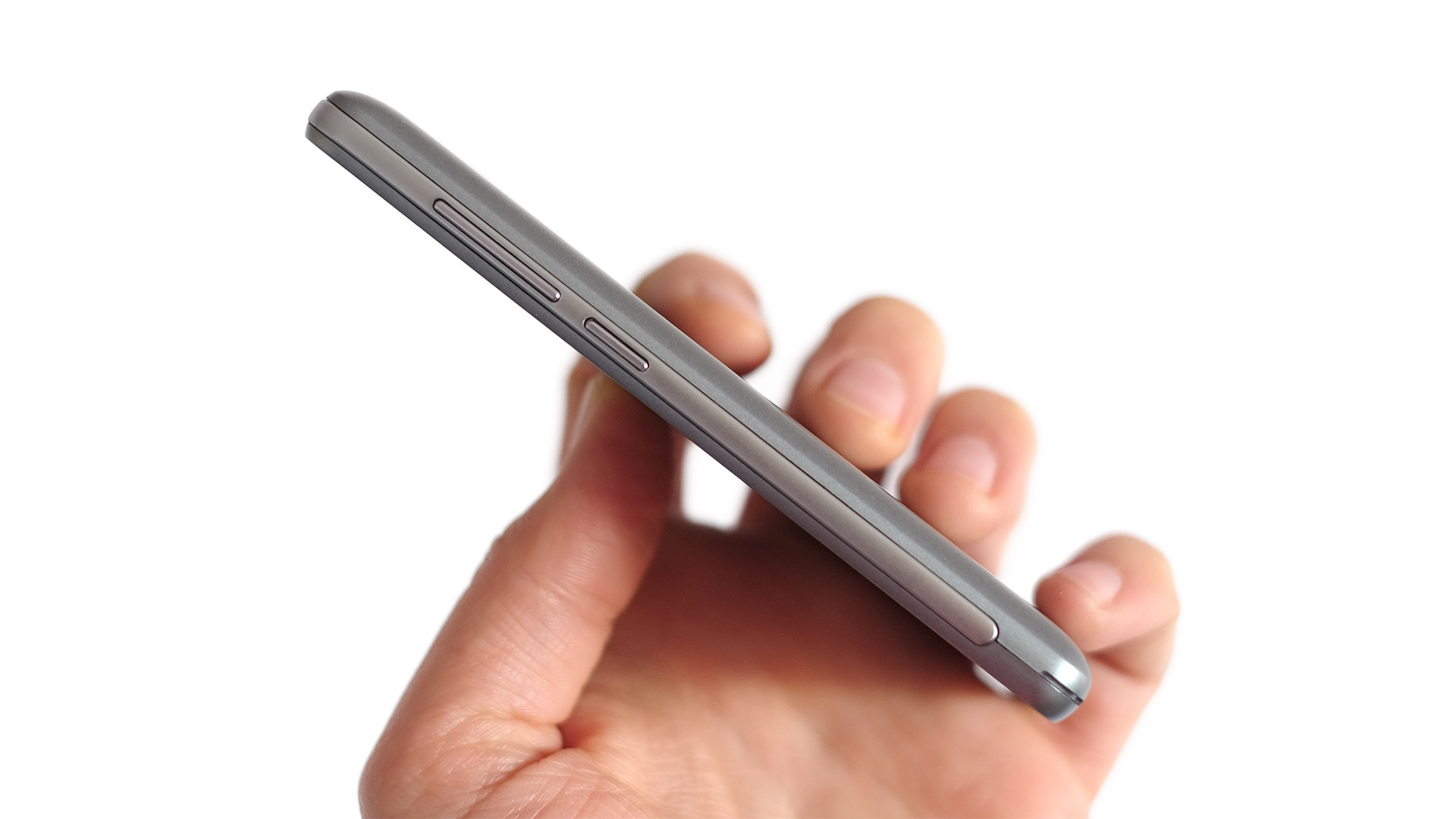
Under the back panel there’s also a microSD card slot, so you can upgrade the memory banks.
The IMO Q also has dedicated pads for the soft keys below the screen, rather than pure software ones. It’s a good job they’re here, as with a 4-inch screen there’s much less display space than most of us are used to.
Display
- Low resolution
- Weak viewing angles
- Washed out colours
This is among the smallest-screen Android phones you can buy, and the technology the IMO Q features is quite basic. The majority of phones sold today have IPS LCD screens, a panel type designed to stop displays looking weird when viewed from an angle.
The IMO Q has a more basic TN (twisted nematic) display that only looks right dead-on. Tilt it back and the image appears washed out, tilt it forwards and a shadow creeps over the screen. This is called contrast shift, and it’s an ugly effect we don’t see very often in phones these days.
We doubt many people after a phone this cheap are hardcore mobile gamers or looking to watch Netflix on their handset, but this panel type spoils enjoyment of these activities.
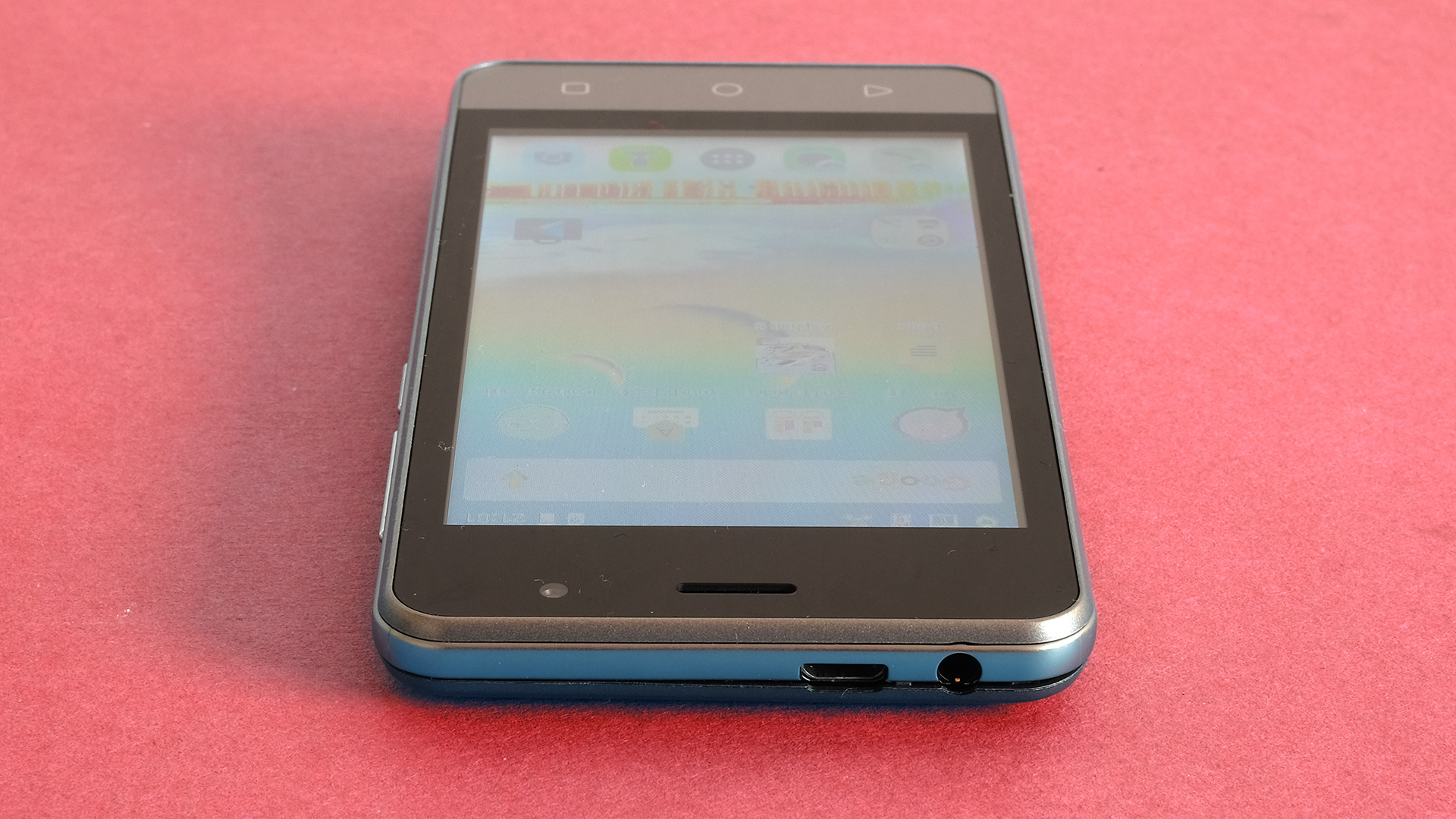
Even dead-on, the IMO Q’s image quality is quite a lot worse than some phones just a little pricier. Colours are cold-looking and washed out, and the resolution is low at 480 x 800 pixels.
We notice the other issues more than the low pixel density, but if you’re ‘upgrading’ from a busted 720p phone this is a major downgrade. It also lacks an auto brightness setting, meaning you have to manually play with the brightness slider as you head outside.
One alternative phone to consider at the bottom end of the market is the Moto E3. It has a higher-quality IPS LCD screen with much better colour and resolution.
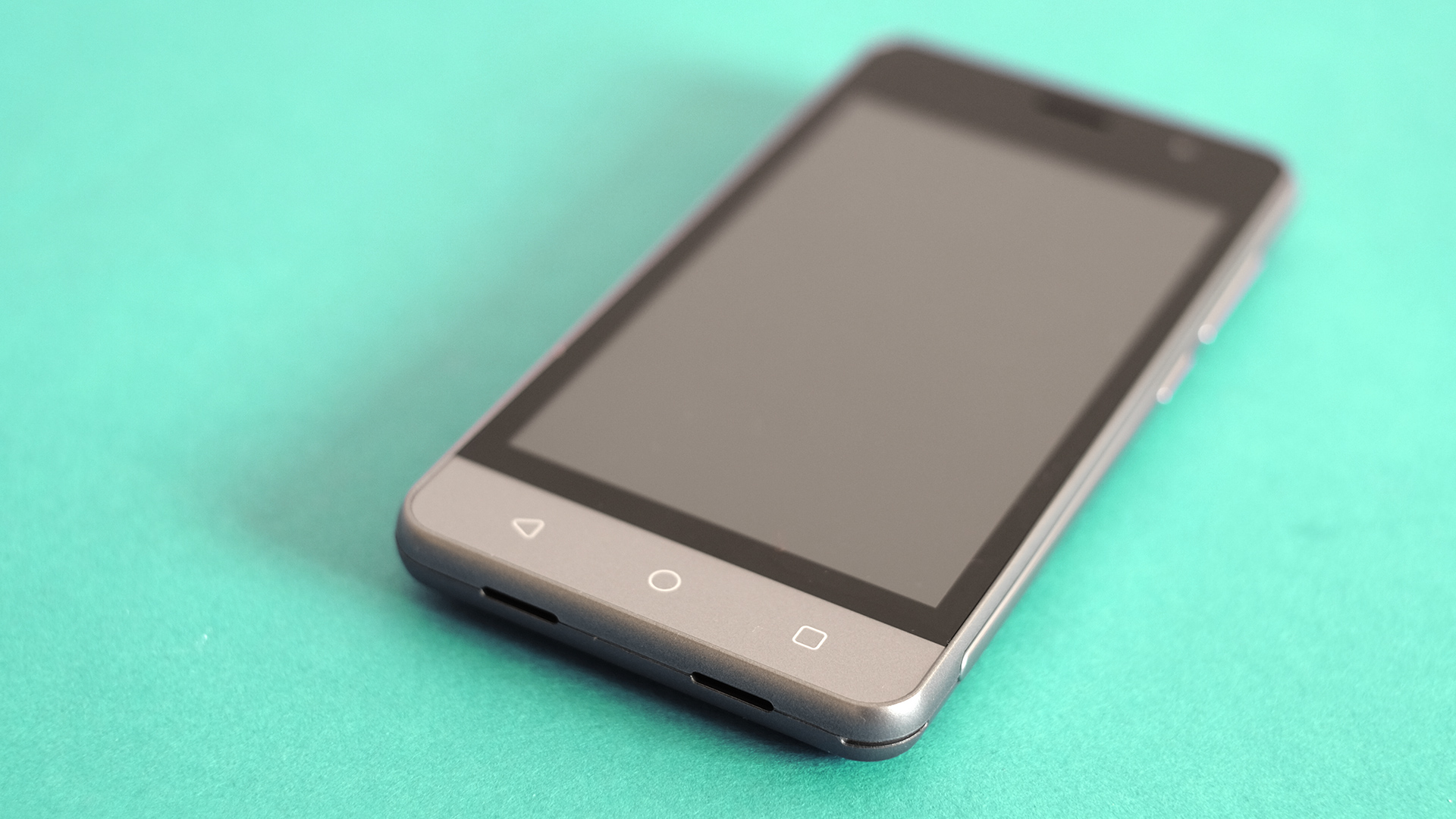
Unless you’re used to typing on a tiny screen, you’ll find typing on the IMO Q a chore too. We knew it was going to be a struggle, our fingers more accustomed to 5-inch-plus displays these days, but there also seems to be issues with where the touchscreen registers presses towards the edge of the display, and it mistakes fast taps between characters as swipes.
All-but-forgotten cheap Windows Lumia phones like the ancient Lumia 520 really nailed typing on tiny screens, but it’s borderline painful here. There is a solution, though: swipe typing. This is where you draw a line between characters rather than tapping on them individually.
However, you need a bit of know-how to get this working, as you need to install a different keyboard from Google Play and turn the feature on. We doubt whether many prospective buyers would necessarily have read enough of our tips and tricks articles to know this.
Andrew is a freelance journalist and has been writing and editing for some of the UK's top tech and lifestyle publications including TrustedReviews, Stuff, T3, TechRadar, Lifehacker and others.

